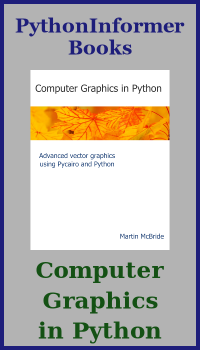Universal functions in in numpy
Categories: numpy

The section on vectorisation looked to apply arithmetic operators across a whole array in a single expression. Universal functions allow us to apply mathematical functions across a whole array in a similar way. Universal functions, or ufuncs for short, special NumPy versions of standard maths functions.
Example universal function - sqrt
The sqrt ufunc calculates the square root of each element in an array. For example:
a = np.array([1, 2, 3, 4])
b = np.sqrt(a)
This calculates the square root of each element 1, 2, 3, 4, giving the result:
b = [1. 1.41421356 1.73205081 2. ]
Of course this can be applied to multi-dimensional arrays too, for example a 2 by 3 array:
a = np.array([[10, 20, 33], [40, 50, 60]])
b = np.sqrt(a)
This again calculates the square root of each element and returns another 2 by 3 array:
b = [[3.16227766 4.47213595 5.74456265]
[6.32455532 7.07106781 7.74596669]]
Example universal function of two arguments - power
Some ufuncs take two arguments, for example the power function:
a = np.array([5, 10, 5, 10])
b = np.array([2, 2, 3, 3])
c = np.power(a, b)
power(x, y) calculates x to the power y. The function is equivalent to x**y.
So power(5, 2) is 5 squared, or 25, and so on:
b = [ 25 100 125 1000]
Summary of ufuncs
There are quite a number of ufuncs, and they are all described in the official NumPy documentation. The main groups of functions are:
- Maths operations
- Trigonometric functions
- Bit manipulation
- Comparison functions
- Logical functions
- Float functions
Additional arguments
ufuncs can be called with additional, optional arguments:
out, covered below.where, see Advanced vectorisation.
out
Normally, a ufunc creates a new NumPy array to hold its result:
a = np.array([1, 2, 3, 4])
b = np.array([2, 4, 6, 8])
c = a + b
The out parameter allows us to specify an existing array for the output. To use this feature, we must use the add ufunc rather than the + operator:
a = np.array([1, 2, 3, 4])
b = np.array([2, 4, 6, 8])
r = np.zeros_like(a)
np.add(a, b, out=r)
This fills the array r with the result of a + b. The shape of the output array must be compatible with the input arrays.
One case where this is useful is if you want to re-use an existing array, for example to add a to b and leave the result in a. This is particularly useful if the arrays are very large. Here is how to do it:
a = np.array([1, 2, 3, 4])
b = np.array([2, 4, 6, 8])
np.add(a, b, out=a)
Related articles
Join the GraphicMaths/PythonInformer Newsletter
Sign up using this form to receive an email when new content is added to the graphpicmaths or pythoninformer websites:

Popular tags
2d arrays abstract data type and angle animation arc array arrays bar chart bar style behavioural pattern bezier curve built-in function callable object chain circle classes close closure cmyk colour combinations comparison operator context context manager conversion count creational pattern data science data types decorator design pattern device space dictionary drawing duck typing efficiency ellipse else encryption enumerate fill filter for loop formula function function composition function plot functools game development generativepy tutorial generator geometry gif global variable greyscale higher order function hsl html image image processing imagesurface immutable object in operator index inner function input installing integer iter iterable iterator itertools join l system lambda function latex len lerp line line plot line style linear gradient linspace list list comprehension logical operator lru_cache magic method mandelbrot mandelbrot set map marker style matplotlib monad mutability named parameter numeric python numpy object open operator optimisation optional parameter or pandas path pattern permutations pie chart pil pillow polygon pong positional parameter print product programming paradigms programming techniques pure function python standard library range recipes rectangle recursion regular polygon repeat rgb rotation roundrect scaling scatter plot scipy sector segment sequence setup shape singleton slicing sound spirograph sprite square str stream string stroke structural pattern symmetric encryption template tex text tinkerbell fractal transform translation transparency triangle truthy value tuple turtle unpacking user space vectorisation webserver website while loop zip zip_longest
